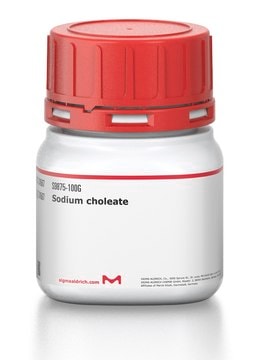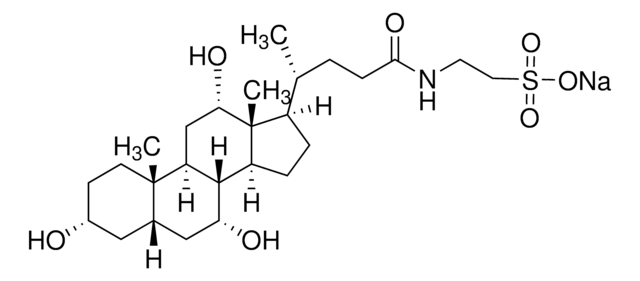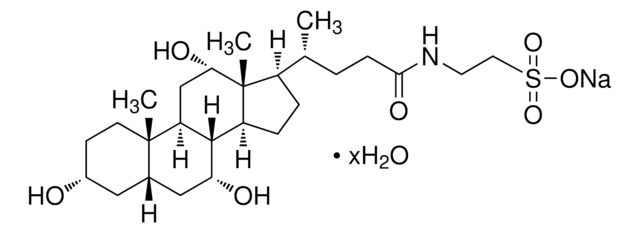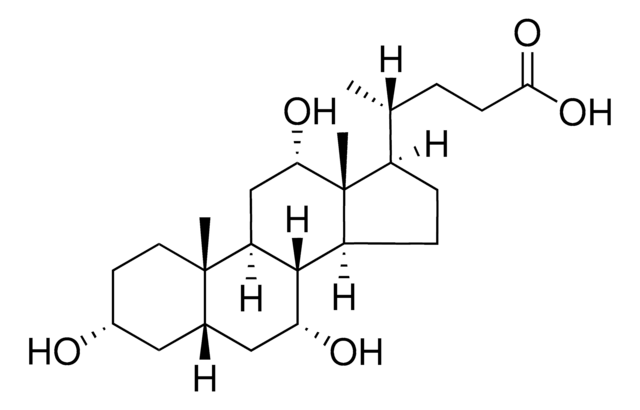48305
Bile salts
suitable for microbiology
Synonyme(s) :
Bile acids sodium salt, cholic acid-deoxycholic acid sodium salt mixture, Bile acids sodium salt, Cholic acid-Deoxycholic acid sodium salt mixture
About This Item
Description
anionic
Niveau de qualité
Stérilité
non-sterile
Pureté
40-60% (Cholic Acid ; approximately 50% sodium cholate and approximately 50% sodium deoxycholate, HPLC)
Forme
powder
Composition
cholic acid sodium salt, ~50%
deoxycholic acid sodium salt, ~50%
Impuretés
≤5% water
Perte
≤5% loss on drying (water)
Solubilité
H2O: 0.1 g/mL, clear, faintly yellow
Application(s)
microbiology
Température de stockage
10-30°C
Description générale
Bile salt is an organic sodium salt with a conjugate of any of the bile acids along with either glycine or taurine. Biles salts are composed of four different kinds of bile acids - cholic, deoxycholic, chenodeoxycholic and lithocholic acids.
Bile salts are extracted under controlled conditions from purified fresh bile, to be used in bacteriological culture media, where it behaves as a selective inhibitory agent that enables isolation and identification of pathogens. For example, in MacConkey Agar/Broth.
Application
Actions biochimiques/physiologiques
Code de la classe de stockage
11 - Combustible Solids
Classe de danger pour l'eau (WGK)
WGK 3
Point d'éclair (°F)
Not applicable
Point d'éclair (°C)
Not applicable
Équipement de protection individuelle
Eyeshields, Gloves, type N95 (US)
Faites votre choix parmi les versions les plus récentes :
Déjà en possession de ce produit ?
Retrouvez la documentation relative aux produits que vous avez récemment achetés dans la Bibliothèque de documents.
Les clients ont également consulté
Notre équipe de scientifiques dispose d'une expérience dans tous les secteurs de la recherche, notamment en sciences de la vie, science des matériaux, synthèse chimique, chromatographie, analyse et dans de nombreux autres domaines..
Contacter notre Service technique




